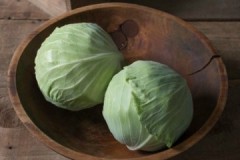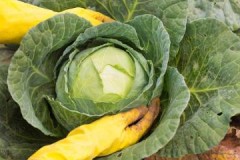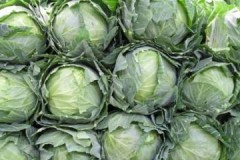We save vitamins, or is it possible to freeze fresh cabbage in the freezer
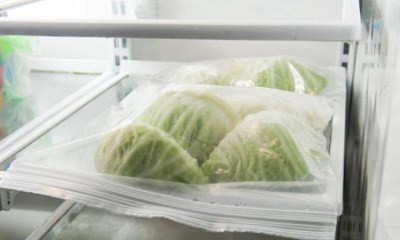 Vegetables and fruits quickly cooled to -18 ° С are inferior in the amount of nutrients only to fresh fruits and leaves. Freezing cabbage in the freezer is an easy way to preserve vitamin products for the winter.
Vegetables and fruits quickly cooled to -18 ° С are inferior in the amount of nutrients only to fresh fruits and leaves. Freezing cabbage in the freezer is an easy way to preserve vitamin products for the winter.
The vegetable plant is rich in water (90% by weight), so there are features of preparation for freezing and subsequent use.
Let's take a closer look at whether and how to properly freeze fresh cabbage for the winter in order to store it in the freezer.
Content
Storage without loss of useful properties
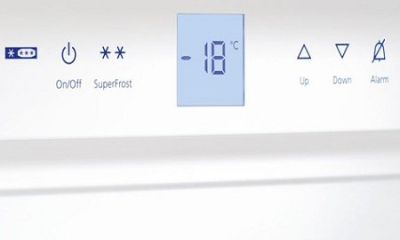 Any method of storage and cooking leads to a change in the composition of vegetables.
Any method of storage and cooking leads to a change in the composition of vegetables.
It is advisable to consume fruits or other plant parts fresh... If this is not possible for any reason or there is no basement with suitable conditions, then the best alternative is freezing.
Some food technologists and nutritionists recommend not freezing cabbage due to its high water content. The moisture in the freezer evaporates quickly. The product loses some of its useful properties, the taste changes after defrosting.
Freezing benefits:
- an easy way to preserve vegetables for the winter;
- easy preparation and processing before cooling;
- long-term storage without significant loss of quality;
- saving time when preparing food.
Freezing ranks first in the unofficial rating of storage methods for fruits and vegetables.
How to prepare vegetables and containers for freezing for the winter?
After purchase, the vegetable must be processed as soon as possible. A quick preparation for storing in the freezer is to remove the top leaves from the head of cabbage to freeze it whole. It will take a little more time to remove the leaves from the forks, cut the cabbage strips.
How to prepare heads of cabbage:
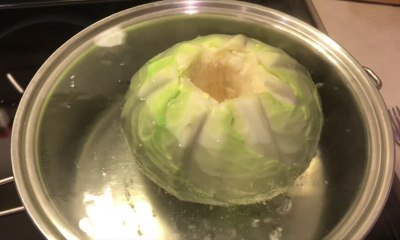 Remove all top leaves, carefully cut the core.
Remove all top leaves, carefully cut the core.- Rinse the entire head in cold water before freezing.
- If you need a blank for stuffed cabbage, then cut the head in the middle with a sharp knife into 2 halves and remove the leaves.
- If you are making a stock for borscht, then divide each half of the head into 2 more parts to make 4 pieces.
- Remove the core. Freeze as it is or chop finely.White and red cabbage is usually chopped and cut into narrow strips.
Before freezing, vegetables are blanched - treated with hot water or steam. In this way, air is removed from plant tissues, so the shelf life is lengthened. The proportions of vegetable and water 1: 4. For 2-3 heads of cabbage take 2 tbsp. l. salt.
Instructions:
- Pour salt into the cut-out hole, place the forks in a container of boiling water. Wait for re-boiling, reduce heat to low. Blanch for 3 minutes. Let the water drain, then put the whole head or just the leaves in the freezer.
- Pre-blanch the fork pieces or whole leaves in salted water for 1-2 minutes.
- Soak cabbage strips or pieces in salted boiling water for less than 1 minute.
- Remove whole heads or halves from the water using kitchen tongs, lay out on a towel.
- Remove the leaves from the pan using a slotted spoon, let the water drain.
- Drain the shredded cabbage through a colander.
Prolonged contact with hot water impairs the taste of the leaves, they soften greatly. For this reason, they blanch very quickly.
What to store?
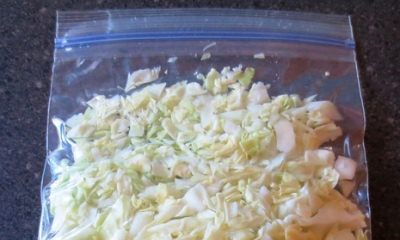 For storing leaves or shredded cabbage in the freezer use plastic containers with lids.
For storing leaves or shredded cabbage in the freezer use plastic containers with lids.
Rectangular containers are more practical for placing in the freezer than round ones. Disposable plastic trays are not suitable: they break easily after being frozen.
Practical type of packaging - plastic bags... They are convenient for storing whole and shredded heads, leaves in the freezer. The bags are filled in such a way as to use the contents at a time, for example, for one pot of borscht.
Be sure to release air from the portioned sachets after filling. On top of the container, they make signatures with a marker that they put the date of freezing. You can stick on sales price tags, sign with a pen, pencil or felt-tip pen.
Stacking containers and bags too tightly in the freezer is not recommended. Air must circulate between foods in the refrigerator.
The ways
There are several ways to store fresh cabbage in the freezer.
Whole heads
Small and medium-sized heads are tightly wrapped in cling film. Transfer from the freezer to the vegetable shelf of the refrigerator before use.
After the cabbage thaws a little, remove the film and divide the head of cabbage into leaves. Uncut fork retains nutrients better.
The disadvantage of this storage method is that whole heads take up a lot of space. In addition, the frozen vegetable tastes differently from the fresh one.
Leaves
Each head of cabbage purchased in a store or cut in the garden must be cleaned of contaminated upper leaves, rinsed. It is recommended to remove the leaves by hand and not cut them off. Upon contact with metal, many plant compounds are destroyed.
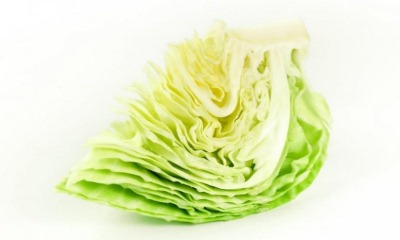 Instructions:
Instructions:
- take leaves of medium thickness;
- blanch, let them cool on the table;
- if the leaves are large, then divide into 2 parts;
- fold the leaves in stacks of 10;
- put in a bag, close tightly.
Do not wash the frozen leaves before cooking the cabbage rolls, let them thaw a little. Then they become soft, do not break. One sheet is thawed at room temperature after 10 minutes.
Chopped
Heads are prepared in the same way as for freezing leaves... Cut in any convenient way. They are laid out in containers or in bags made of dense polyethylene. They take up little space, especially when flattened.
Storing shredded cabbage in the freezer is convenient because it significantly reduces cooking time.
Unfortunately, in this form, the vegetable loses its beneficial properties faster., softens more, not suitable for salads. More nutrients are retained in whole heads and large chunks.
How to freeze shredded cabbage for the winter, video recipe:
Timing
The temperature in the freezer compartment of the refrigerator reaches -18 ° C... In such conditions, vital processes in plant cells stop, microbes do not multiply. Store cabbage at this temperature for up to 10-12 months.
The shelf life of frozen vegetables is long - almost until the new harvest. However, it is not recommended to keep vitamin products in the freezer at home for more than 6-8 months. The beneficial properties of vegetables decrease with each week of storage.
Advice
"Correct" freezing is provided by the No Frost technology... Frost in food bags is almost not formed; after defrosting, the cabbage will not soften.
SuperFrost mode - shock freezing, the most complete preservation of nutrients and nutrients. In addition to choosing a refrigerator with new technologies, it is important to observe the rules of storage and defrosting.
Recommendations:
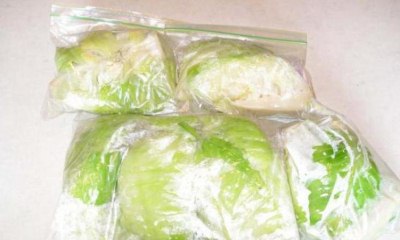 Cool the cabbage after boiling water, not with cold water, but slowly, in the air. This way vitamins are better preserved.
Cool the cabbage after boiling water, not with cold water, but slowly, in the air. This way vitamins are better preserved.- Spread the cabbage (chopped and leaves) cooled after blanching on a tray and place in the freezer for 2 hours. Then pack in containers or bags. This technique helps to avoid chunk freezing.
- Defrost at low temperatures, that is, in the refrigerator, but not with hot water or microwave.
- Use the chopped white cabbage for borscht, cabbage soup and simmer in unfrozen form.
- Do not re-freeze vegetables after defrosting. Otherwise, nutritional properties and taste are impaired.
Do not freeze some of the cabbage, but chop and ferment. A vegetable in this form also retains its beneficial properties.
Read the most useful and important information about storing cabbage. here.
Conclusion
Frozen or shredded heads, leaves are not suitable for salads. A semi-finished product from the freezer is used for stuffed cabbage, borscht and other familiar dishes.
Defrosting is quick and no need for chopped vegetables... The shelf life of cabbage in the freezer is long, almost until the next harvest.

